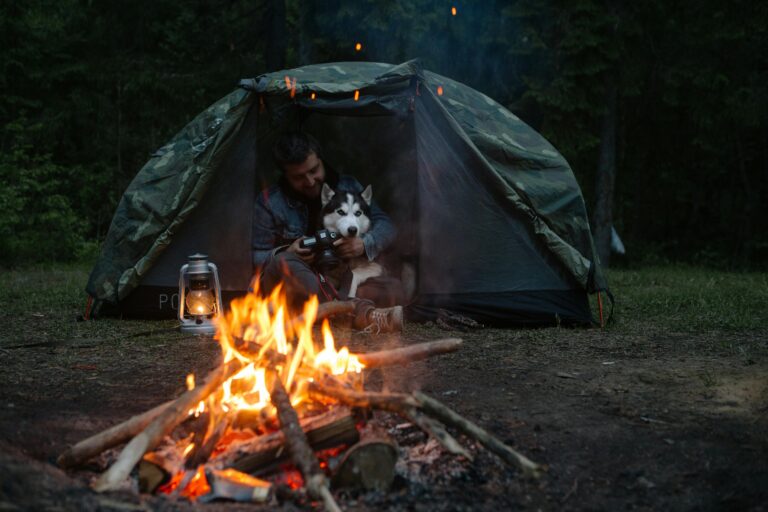Vacations Shouldn’t Undo Your Hard Work
You’ve worked hard on your dog’s training — now summer rolls around and you’re hitting the road for camping trips, RV getaways, or cabin stays. But without a plan, all that structure can fall apart fast in unfamiliar settings.
The good news? Travel doesn’t have to mean setbacks. With just a few adjustments, your dog’s training can stay sharp — and even improve — while you’re away.

Keep Your Training Tools Handy
Just because you’re packing light doesn’t mean leaving essentials behind. Before you go, make sure you bring:
- A secure leash and backup long line
- Slip lead or training collar
- “Place” mat or bed
- Treat pouch and high-value rewards
- Crate or travel kennel
- Poop bags and water bowl
Having familiar tools creates consistency and structure in new spaces.
Re-Establish Rules in the New Environment
When you arrive at a campsite or cabin:
- Do a structured walk around the area before letting your dog explore
- Re-practice door thresholds and waiting at exits
- Guide your dog calmly through sniff time and setup
- Don’t immediately let them run loose or greet everyone
This sends the message: “Even here, the rules still apply.”
Use the “Place” Command to Anchor the Day
Whether you’re at a picnic table, firepit, or inside a rental, using the “place” command gives your dog a home base.
- Have them “place” while meals are prepared or tents go up
- Use it during downtime or when guests arrive
- Practice duration work as part of daily calmness training
If they get overstimulated, place gives them direction and resets their focus.
Stick to a Routine (Even a Loose One)
Dogs thrive on predictability. Try to maintain:
- Regular walk times
- Consistent feeding routines
- Morning obedience practice
- Evening wind-down or crate time
Even if your schedule’s flexible, keeping some structure helps your dog stay mentally balanced.
Recall and Long-Line Work in Nature
Camping and nature outings are perfect for practicing recall in open spaces. Use a long line and reward every return to build reliability.
Practice calling your dog back:
- From light distractions like birds or sounds
- Mid-sniff or mid-play
- From increasing distances
- With added movement or excitement nearby
This makes freedom safer — and your dog more responsive.
Set Boundaries at Campsites
Your dog should never be allowed to roam unattended, even in peaceful environments. To maintain respect and safety:
- Keep them leashed unless practicing under control
- Avoid letting them beg or hover near food
- Teach them not to bolt out of tents or vehicles
- Use “out,” “place,” or “leave it” around gear or trash
Even the most relaxed dog benefits from rules.
Prepare for People, Dogs, and Wildlife
Nature isn’t isolated anymore. You’ll likely encounter:
- Other dogs (on- or off-leash)
- Children running past
- Bikes, strollers, or golf carts
- Squirrels, deer, and more
Stay alert, maintain a calm presence, and use obedience to redirect focus. Practicing neutrality here builds real-world resilience.
Final Thoughts: Take the Training With You
Traveling with your dog isn’t a break from training — it’s an opportunity to proof it. New settings test your dog’s ability to stay connected, responsive, and respectful even when everything feels different.
Use these moments to deepen your bond, reinforce your leadership, and show your dog that rules, structure, and trust follow you — wherever the summer takes you.

